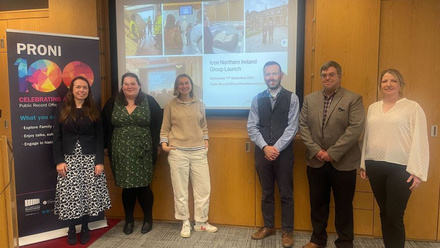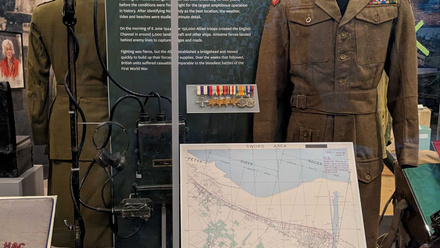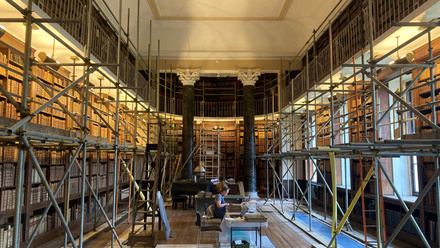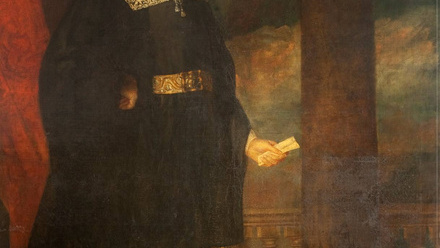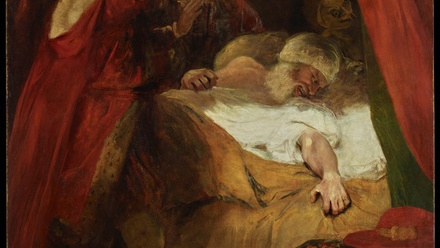A joint research project by The Nivaagaard Collection and the RKD – Netherlands Institute for Art History has led to a great discovery.
A double portrait made in 1626 appeared to be missing a part displaying a woman. Father and son are pictured without the mother, while the Flemish master Cornelis de Vos had painted a family of three.
Through research and conservation work, the portrait of the lady was eventually found. Because of a generous grant, the woman could be reunited with the picture of her husband and son at the Danish museum.
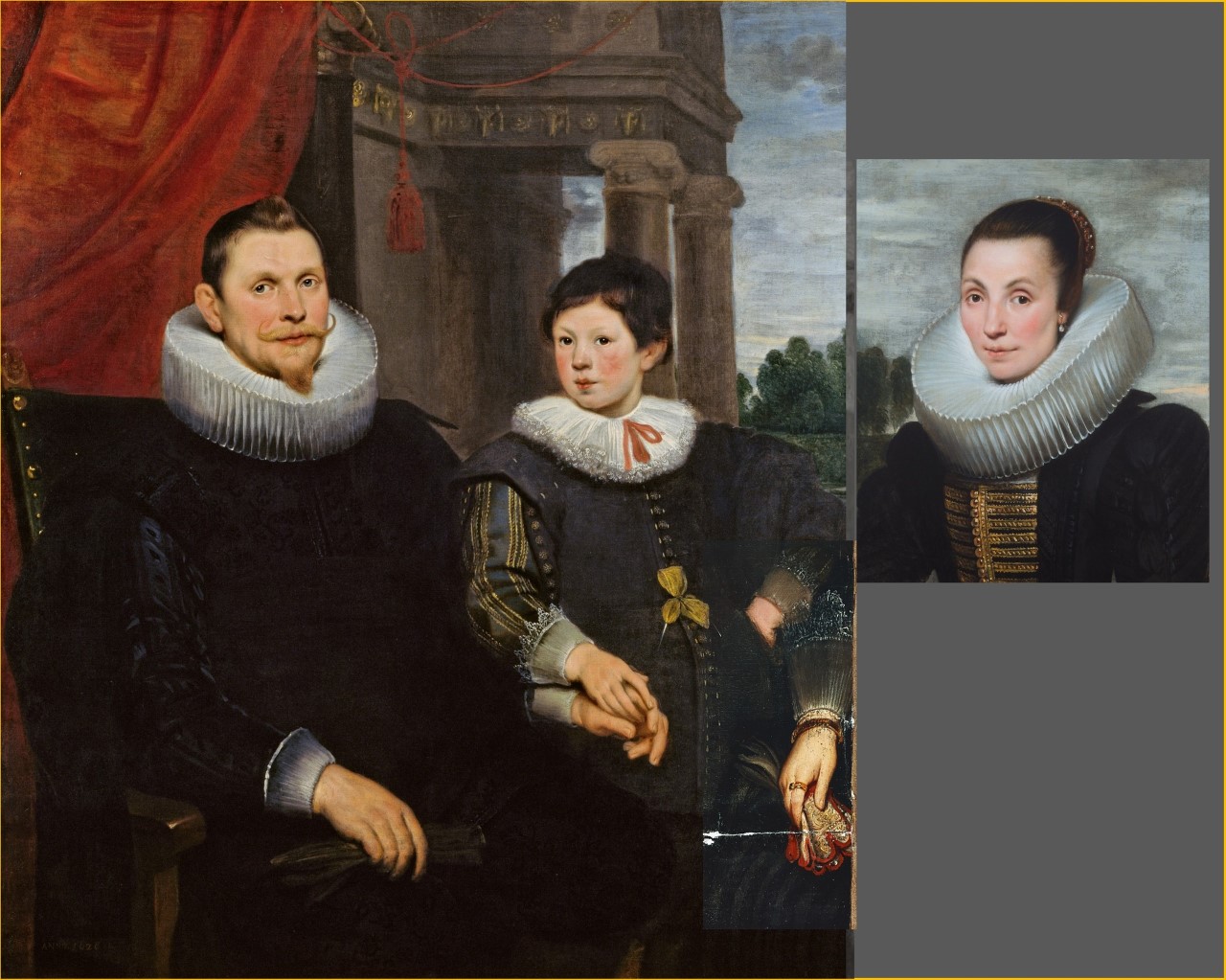
Double portrait with a missing woman
Among The Nivaagaard Collection of Dutch seventeenth century paintings is the large Double Portrait of a Father and Son (138 x 119 cm), painted in 1626 by the renowned and prestigious Antwerp portrait painter, Cornelis de Vos (1584–1651). The double portrait depicts two generations of a wealthy bourgeois family in the form of a father tenderly holding his son by the hand.
In the lower right-hand corner of the painting, a glimpse of a dress can still be seen, indicating that the work once also depicted a mother who must have subsequently been cropped away.
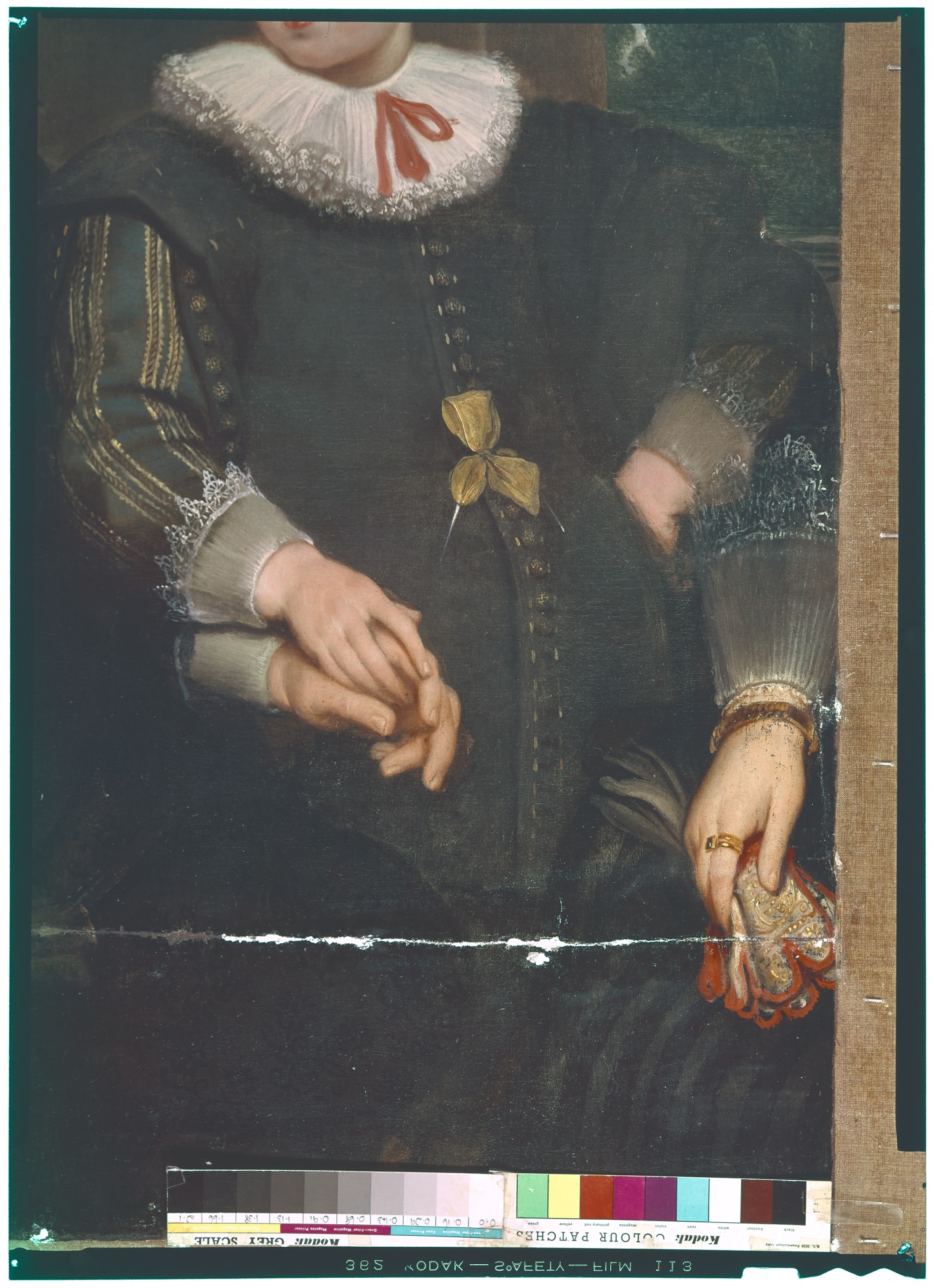
As part of the research project Dutch and Flemish paintings at The Nivaagaard Collection, Jørgen Wadum and Angela Jager started the search for the missing mother.
They eventually found photographs showcasing the artwork without its frame and in a cleaned and restored condition in a 1966 conservation report of the National Gallery of Denmark, SMK.
On these pictures, part of the arm of the lost woman could be seen, as well as her elaborate cuff and her delicate hand, adorned with a costly ring and holding a pair of beautifully embroidered gloves lined with red velvet.
Conservation history of the large Portrait of a Father and his Son
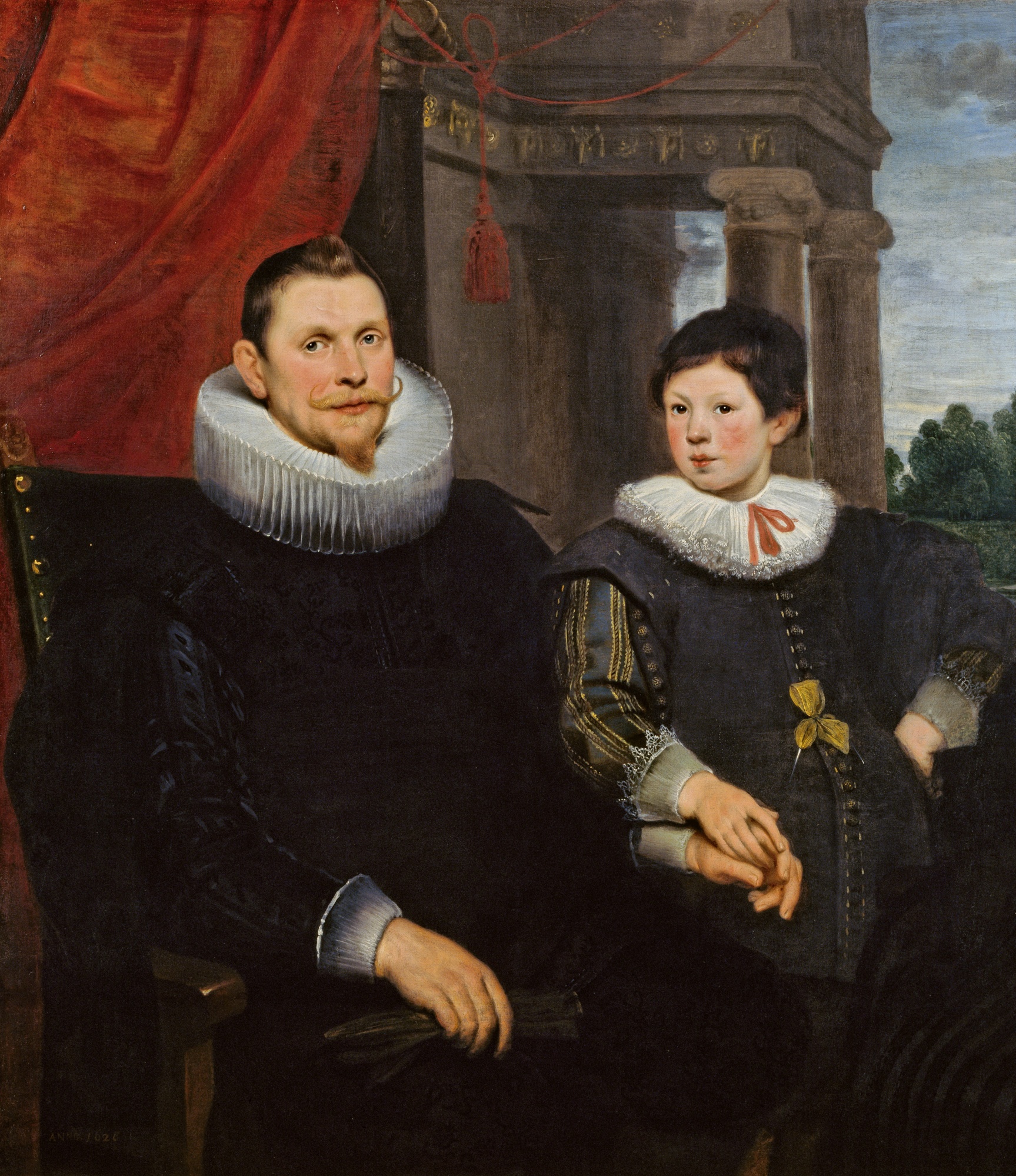
The are no records of any treatment of the painting between its purchase in Paris in 1907 and 1966 when the condition was assessed.
Here, concerns about the forming of minor craquelures caused by the glue-paste lining and a slight lifting of the horizontal seam in the lower part of the painting were noted. The painting was covered by a thick layer of very yellow varnish. It was then decided to remove the glue-paste lining. After removal, the seam was strengthened locally before relining on the hot-table with unbleached wax and damar resin.
The strongly yellowed varnish was removed which to their surprise revealed the hand of a lady at the right edge. Only at this point was it understood that the painting had been trimmed at the right side.
The rediscovered arm and hand of the missing woman on the right was finally carefully covered up again, the entire painting varnished, and the painting returned to Nivaagaard. The treatment was carried out by Mette Bjarnhof and the late Lone Bøgh, and it took place at the Statens Museum for Kunst (SMK), the National Gallery of Denmark in 1966.
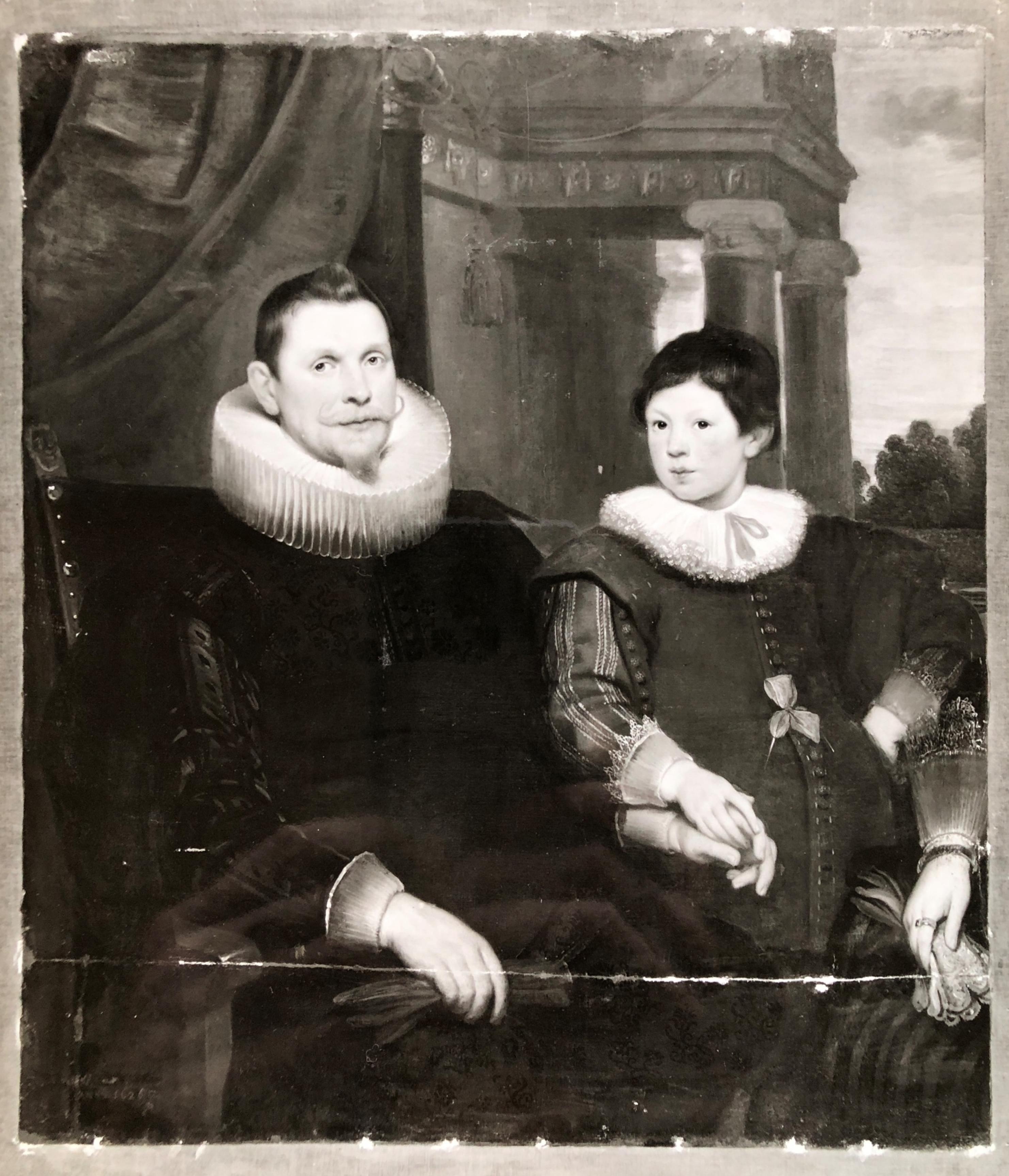
In 2022, Jørgen Wadum and Angela Jager requested old conservation reports from SMK to be transferred to Nivaagaard, and they discovered both the above treatment report, but also the black and white documentation photographs plus one colour transparency showing the missing woman’s lower arm, laced cuff and elegant hand holding beautifully embroidered gloves with a red lining. This discovery led to an intensified search for the missing mother and wife.
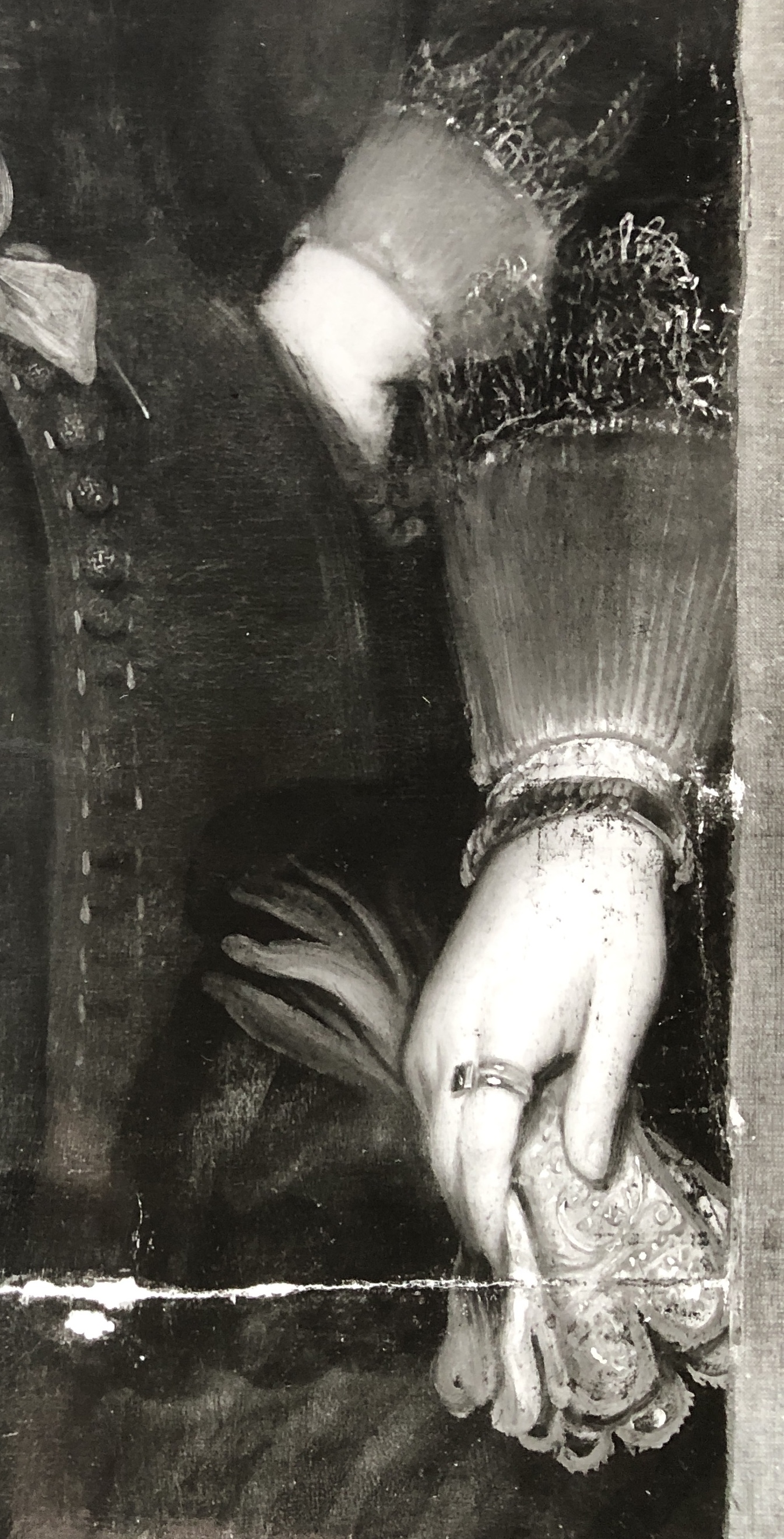
Portrait of a Lady
Wadum and Jager continued their search by looking for comparable portraits of seated women in the oeuvre of De Vos.
To their great excitement, this led them to identify a portrait of an elegant lady with a large millstone collar like that of the father in the double portrait.
It was De Vos’ Portrait of a Lady from 1626, which was auctioned for sale at Christie’s in London in 2014.
At the time, the background of the portrait was dark brown in colour. The new owner, Salomon Lilian, a leading art dealer in Amsterdam and Geneva, had had the portrait cleaned and restored soon after its acquisition.
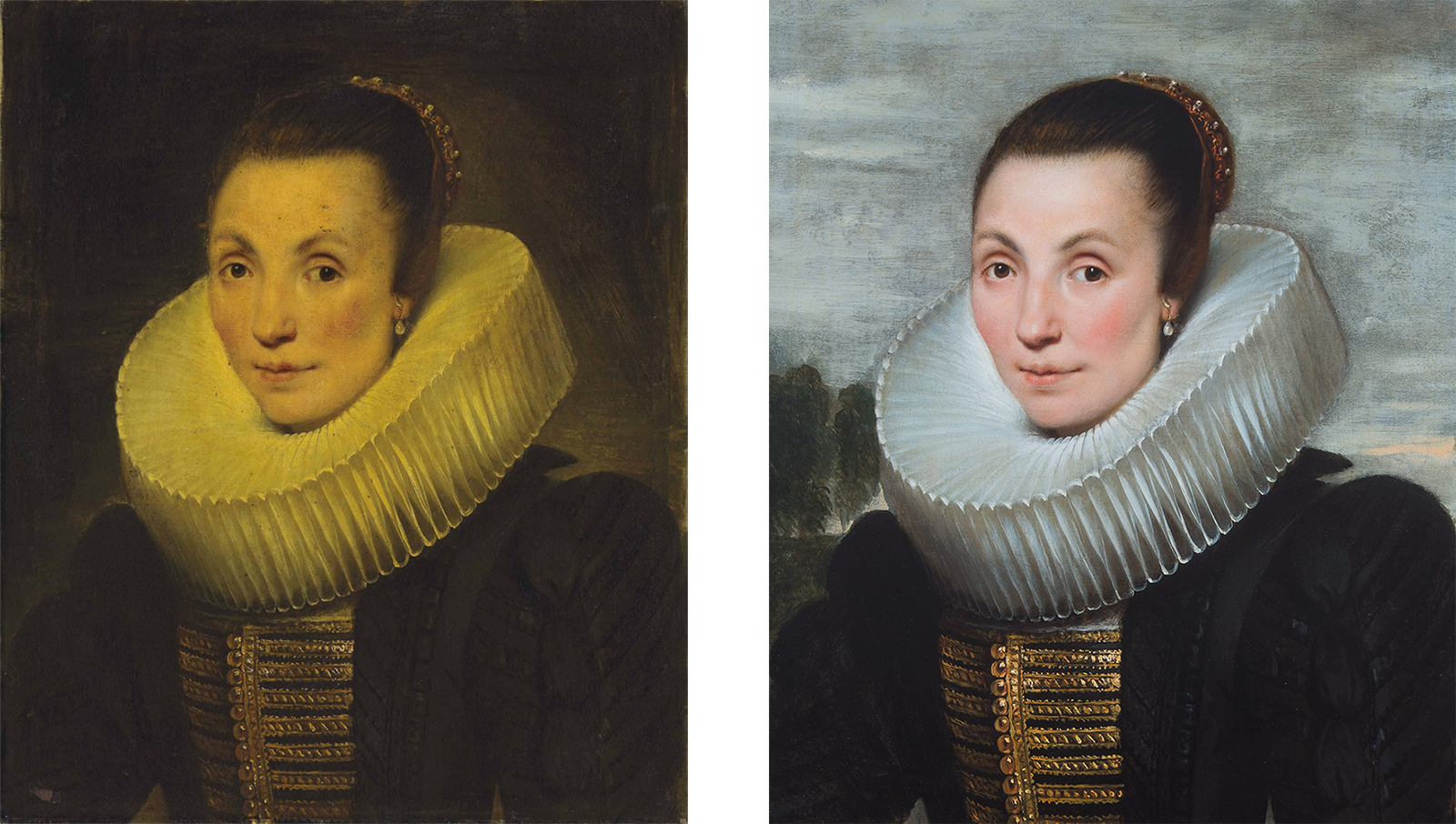
This revealed a landscape with a row of trees in the background behind the lady, as well as a blue sky with white horizontal clouds. The overcast skies match up in both paintings to such an extent that there can be no doubt that they were once part of the same family portrait. The woman's facial features and brown eyes also match those of her son perfectly.
Jørgen Wadum, special consultant at The Nivaagaard Collection said:
If the Amsterdam art dealer Salomon Lilian had not initiated a cleaning of the very dark overpaint of the portrait of a woman by Cornelis de Vos that he acquired in 2014, we probably would not have recognized her as the missing person for our double portrait.
"Apart from her large mill-stone collar and her soft brown eyes identical to those of the boy, it was the sky with its horizontal veil of whitish clouds, the embankment with poplar threes behind a garden only slightly visible between the boy and the mother, that led us to the identification and successive reunification of the family."
The Portrait of a Lady is a rare example of a 17th-century painting that was never lined. The surface texture and the pastocity of the paint, especially the embroidered front of her dress with the gilded buttons, stand out as applied in 1626.
Family reunion
Not only was the missing woman now found, the Portrait of a Lady also turned out to be on sale. A grant from the New Carlsberg Foundation allowed Nivaagaards Malerisamling to acquire the portrait of the mother, reuniting her with her husband and son after a separation of nearly two hundred years. Now it remains for the researchers to find out exactly which family has been reunited in these pictures.

Jørgen Wadum added:
Once again, conservation history and its documentation prove crucial for research of collections.
You can find out more about this project here.


